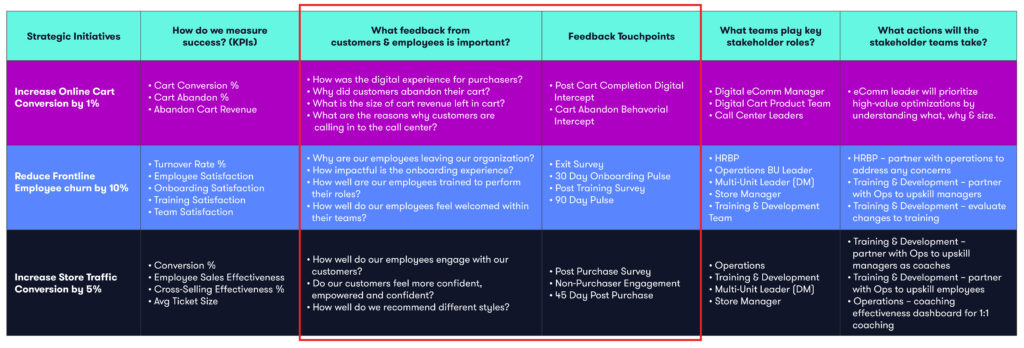BLOG
So, Your NPS is 72 – what’s your point?!

I remember one of my very first Zoom meetings as an executive advisor. It was with the CEO of a very large North American retailer. This brand is considered one of the top experiential brands in the world, and up until that point, we seldom had the opportunity to engage with any member of their executive leadership team.
Our account leader opened the call and set the objectives for the meeting. Very quickly, the CEO of this retailer spoke up: “We have a NPS of 72, I’m not sure what value this call will provide.” At that moment, our team froze. Except for me.
I replied, “So what?” (The silence was deafening).
I continued, “I couldn’t care less what your NPS is. When I look at your text analytics, the topics that are negatively impacting your experience this quarter have been trending negative for the last 18 months. Which means, your brand could be providing a significantly better experience that deepens your moat and accelerates your competitive differentiation.”
That got his attention. I saw his demeanor change. He was engaged. And the questions continued for another 45 minutes – well beyond our 30-minute scheduled meeting.
The problem: executive leaders are too fixated on the score
This CEO is not alone. As a matter of fact, this is a common sentiment among many CEOs I’ve spoken to throughout my career. For more than two years, I spent hundreds of hours on Zoom calls with executive leaders discussing the value (or lack thereof) of their experience strategy.
The two most common questions I would receive from leaders were:
- What is our NPS?
- How does it compare to X, Y, and Z competitors?
It’s not that these questions are bad by any means, but they do encourage certain behaviors among the experience team – specifically, a maniacal focus on the score. All too often, experience professionals are tasked with goal setting (increase our NPS by 2 points by the end of a specific time period) that leads to assigning specific NPS goals/targets per location. This is a limiting approach that is hurting their overall customer experience.
Additional problem: NPS is impacted by many factors
In the last two years alone, we have seen digital experiences, labor shortages, and supply chain issues (to name a few) significantly impact NPS scores. The challenge with NPS being the only focus of an organization is that no specific leader or employee can control the score.
Additionally, when asked for competitive benchmarks on brand NPS, there are too many variables regarding how companies engage with consumers to understand their score. How close to the experience are they engaging their customers? Which communication methods are being used? In which order are survey questions being presented? Then there are the additional aesthetics of the survey, with colors and tags that encourage a different score. Also, don’t get me started on the overall gamification from the frontline by asking for a 10 in order to hit the desired outcome.
Which questions should CEOs and brand leaders actually be asking?
The world’s leading experiential brands with the deepest moats use customer feedback as a lever for CX innovation. Leading brands also understand the impact of focusing on internal improvements and benchmarking against themselves in order to deliver better experiences and enrich the lives of their customers every day. This is why customers love these brands. One great example would be Amazon.: during the 2018 Economic Club lunch in Washington DC, Jeff Bezos discussed the importance of obsessive focus on the customer versus obsession on the customer.
These brands are asking, “What actions have we taken based on the feedback we have received from our customers?” “What are the business outcomes these actions have created?”
Experience leaders should not be focused on “improving the score” as their annual goal. They should be focused on ensuring everyone within the organization has access to customer feedback to ensure the customer is being prioritized throughout every initiative and goal-setting session.
An experience leader should be focused on increasing same-store sales, reducing customer churn, improving operational performance, and improving the lives of employees who are responsible for delivering great experiences. The best experience leaders are focused on influencing the organization, and by default, the NPS score will reflect the level of influence and actions taken by your organization.
Shifting the experience professional mindset
When CEOs shift their mindset from “score-focused” to “action-oriented,” experience professionals will need to show up differently. They will need to use a different set of skills, like understanding and connecting the dots from “here’s what we are hearing” to which stakeholders will take action.
Here is a framework leading experience professionals are using to shift the way they engage with stakeholders across the organization:
The red box is how experience professionals align experience strategy with business strategy to accelerate the delivery of positive business outcomes. Which questions do the business stakeholders need to be answered?
Click here for a free copy of the influencing framework for experience professionals.
Here is how leading experience professionals communicate the impact of experiential data during executive leadership meetings:
In this overview, experience professionals are explaining how customer and employee feedback data is used, while connecting the dots to business outcomes achieved by leveraging said feedback. This is a great opportunity to not only discuss wins, but also engage with executive stakeholders regarding additional prioritizations or investments.
Connect with Zack for a chat
Zack Hamilton
Senior Vice President, Chief Experience & Strategy
![]()
![]()


